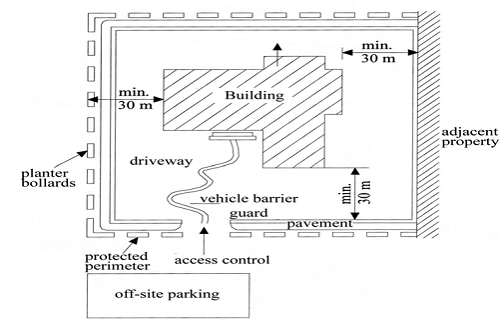The Advancements Of Civil Engineering In Blast Resistant Building Design
 Have you ever thought about the safety of a building against blasts and explosions? It's an important consideration that civil engineers and architects have to take into account when designing buildings in areas that are prone to terrorist attacks or natural disasters. In this post, we will discuss blast resistant buildings, their features, and how they work.
Have you ever thought about the safety of a building against blasts and explosions? It's an important consideration that civil engineers and architects have to take into account when designing buildings in areas that are prone to terrorist attacks or natural disasters. In this post, we will discuss blast resistant buildings, their features, and how they work.
What is a blast resistant building?
A blast resistant building is a structure that is designed to mitigate the effects of a blast or explosion. These types of structures are typically required in areas that are prone to terrorist attacks or accidental explosions. Blast resistant buildings are designed to withstand the forces generated by a blast or explosion, and to protect the occupants and the surrounding environment.
Features of a blast resistant building
A blast resistant building is designed with several features that help mitigate the effects of a blast or explosion. These features include:
- Blast resistant windows and doors
- Reinforced concrete walls and roofs
- Structural steel framing
- Blast resistant glazing
- Blast resistant wall panels
- Blast resistant roofing systems
These features work together to create a building that is capable of withstanding the forces generated by a blast or explosion.
How does a blast resistant building work?
A blast resistant building works by absorbing and mitigating the effects of a blast or explosion. When a blast occurs, the building's walls and roof are designed to flex and absorb the energy of the blast. This helps to prevent the building from collapsing and protects the occupants inside. Blast resistant windows and doors are also designed to flex and absorb energy, preventing them from shattering and sending dangerous shards of glass flying.
Blast resistant wall panels are designed to absorb the energy of a blast and prevent debris from flying off the building. These panels are typically made from materials such as steel, aluminum, or a composite material. Blast resistant glazing is made from a combination of materials such as glass and polymer coatings, making it more durable and resistant to shattering.
Blast resistant roofing systems are designed to prevent the roof from collapsing in the event of a blast or explosion. These roofing systems typically consist of reinforced concrete or steel, and are designed to absorb and dissipate the energy of a blast.
Benefits of blast resistant buildings
There are several benefits to building blast resistant buildings in areas that are prone to terrorist attacks or accidental explosions. These include:
- Protection of occupants
- Protection of surrounding environment
- Less damage to the building
- Mitigation of risk
- Reduction in insurance premiums
Blast resistant buildings are designed to protect the occupants and the surrounding environment in the event of a blast or explosion. They also help to mitigate risk and reduce insurance premiums, as they are less likely to be damaged in the event of a blast or explosion.
FAQs
Q: What types of buildings require blast resistance?
A: Buildings that are located in areas that are prone to terrorist attacks or accidental explosions typically require blast resistance.
Q: How much does it cost to build a blast resistant building?
A: The cost of building a blast resistant building can vary depending on the size and complexity of the building. However, it is typically more expensive than building a traditional building.
Q: How long does it take to build a blast resistant building?
A: The construction time for a blast resistant building can vary depending on the size and complexity of the building.
Q: Are blast resistant buildings only for government buildings?
A: No, blast resistant buildings can be built for any type of building located in areas that are prone to terrorist attacks or accidental explosions.
Q: Are blast resistant buildings earthquake resistant?
A: Blast resistant buildings are designed to mitigate the effects of a blast or explosion, and are not specifically designed to be earthquake resistant.
In conclusion, blast resistant buildings are an important consideration for civil engineers and architects when designing buildings in areas that are prone to terrorist attacks or accidental explosions. These buildings are designed with features that help absorb and mitigate the effects of a blast or explosion, protecting the occupants and the surrounding environment. While they are typically more expensive to build than traditional buildings, they have many benefits, including protection of occupants, mitigation of risk, and reduction in insurance premiums.


Post a Comment for "The Advancements Of Civil Engineering In Blast Resistant Building Design"